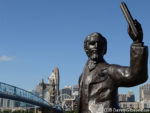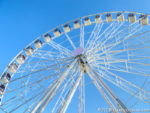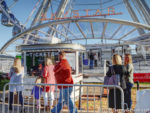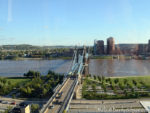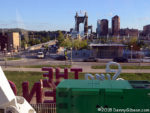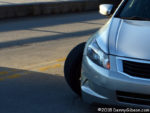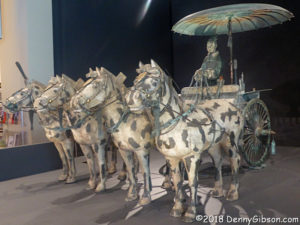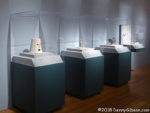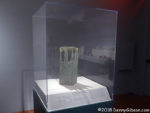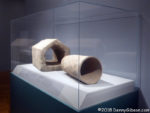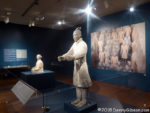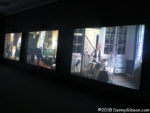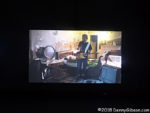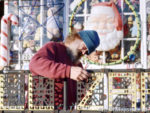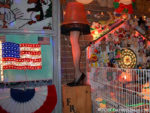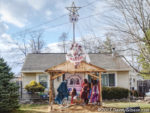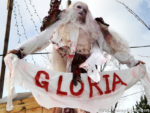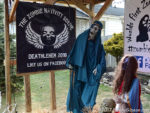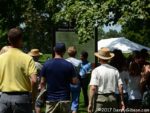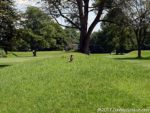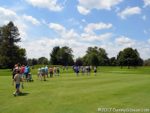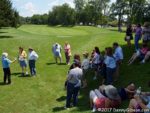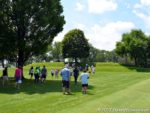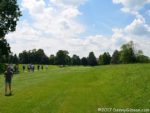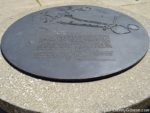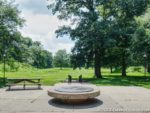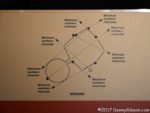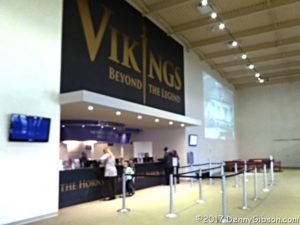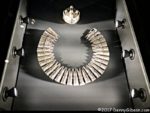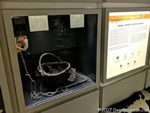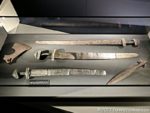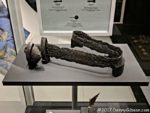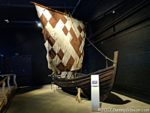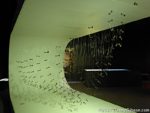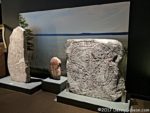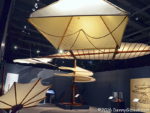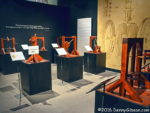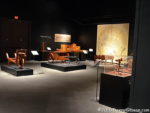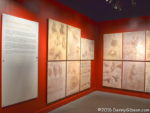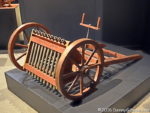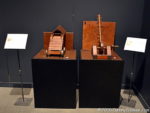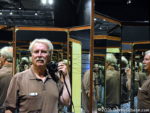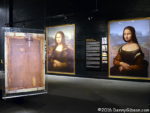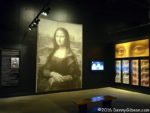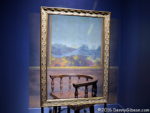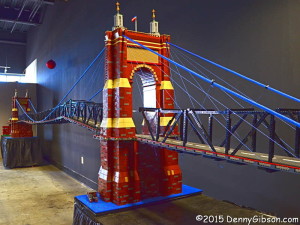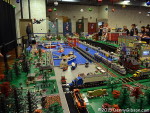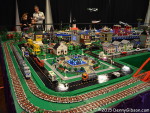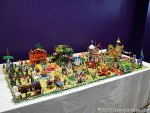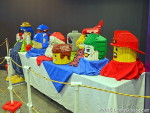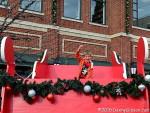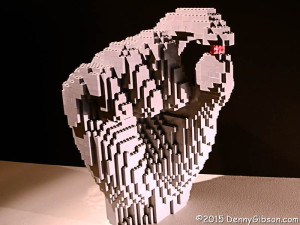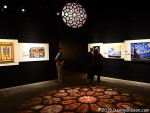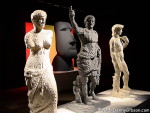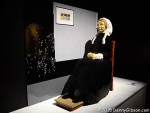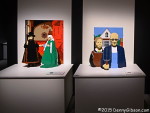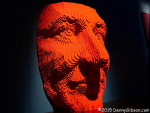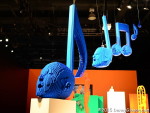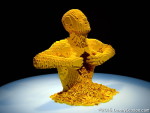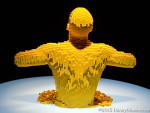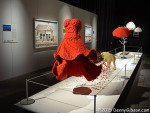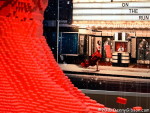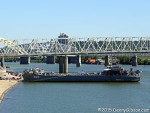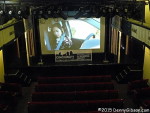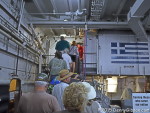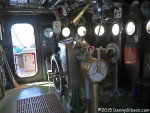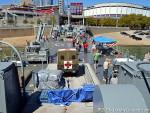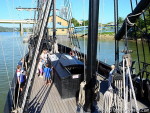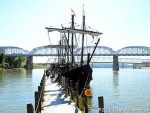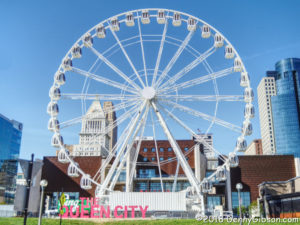 There’s a big wheel standing on edge near the Cincinnati waterfront. Its owner, Skystar, officially calls it America’s Largest Portable Observation Wheel, but even they know that it’s a Ferris wheel to most folks. The 137 foot wheel opened in Cincinnati on September 1 and will be spinning daily through December 2. It arrived in Cincinnati from Norfolk, Virginia, and before that was in Louisville, Kentucky. A friend and I went for a ride on Friday.
There’s a big wheel standing on edge near the Cincinnati waterfront. Its owner, Skystar, officially calls it America’s Largest Portable Observation Wheel, but even they know that it’s a Ferris wheel to most folks. The 137 foot wheel opened in Cincinnati on September 1 and will be spinning daily through December 2. It arrived in Cincinnati from Norfolk, Virginia, and before that was in Louisville, Kentucky. A friend and I went for a ride on Friday.
I parked on the Kentucky side and walked across the John A Roebling Suspension Bridge. Before heading to Ohio, I slipped down to the water’s edge to take a few pictures. I’m pretty sure that the bronze Mr. Roebling is gesturing toward his very permanent bridge but the sweep of his hand also takes in the temporary Ferris wheel positioned at its northern end.
The maze to the ticket booth and beyond would clearly accommodate a lot more people than were on hand early Friday evening. So would the wheel itself. Each of the 36 gondolas has room for six passengers which means 216 people could be simultaneously spinning in circles if the thing was filled to capacity.
There are a couple of things at play that make full occupancy unlikely. One is the policy of promising “a private experience for passengers” by not putting strangers together in a car. While I personally find chatting with strangers in this sort of situation to often be interesting and fun, that’s evidently not the case for most. Another thing I suspect will help fend off worries about filling every seat is the $12.50 ticket price for a fifteen minutes or so ride. I’ve seen a minimum of four revolutions advertised and we got six… or maybe seven. It’s a cool experience and one that individuals and couples will likely consider worth the cost. Families of any size with kids over two (under two ride free) likely won’t.
Addendum: A friend tells me that on the opening weekend the wheel was full, there were long lines, and strangers did indeed ride together. Here’s hoping that happens again someday.
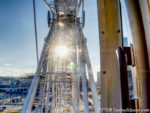

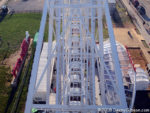 With virtually no line, we were soon on board and in motion. The wheel stands between Cincinnati’s two stadia. That’s Great American Ball Park in the background of the second picture and Paul Brown Stadium in the background of the third. Yes, it is possible to see and photograph both of them without the arms of the wheel in the way. GABP (with cohort Great American Tower) is here, and PBS is here. The timing of our ride was such that the setting sun was aimed directly at us as we faced west. That’s why I used the neighboring gondola as a sun-shield and why the picture’s still extra crappy.
With virtually no line, we were soon on board and in motion. The wheel stands between Cincinnati’s two stadia. That’s Great American Ball Park in the background of the second picture and Paul Brown Stadium in the background of the third. Yes, it is possible to see and photograph both of them without the arms of the wheel in the way. GABP (with cohort Great American Tower) is here, and PBS is here. The timing of our ride was such that the setting sun was aimed directly at us as we faced west. That’s why I used the neighboring gondola as a sun-shield and why the picture’s still extra crappy.
The most scenic views were away from the city and generally involved the river and the Roebling Bridge. The bridge was almost lined-up straight-on for the second photo. In the third, it’s in the background as we duck behind the “Sing the Queen City” sign.
As sometimes happens when your view is greatly expanded, we were witnesses to a bit of drama. In the first picture, the grey car on the left side is clearly facing the wrong way for the lane it is in on the two way bridge. A trailing black streak across the yellow stripe can be seen with a close look. We spotted the incident near the end of our ride and before long were walking past it. Apparently the right front wheel had let go and threw the car into the opposing lane. A head on collision was somehow avoided.
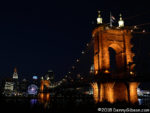
 We ate dinner in Kentucky as the sun continued to set which made a brief stop near where I’d taken my first Ferris wheel pictures more than worthwhile. I had a tripod in the car and using it would have also been more than worthwhile but I was too lazy. Several photographers who weren’t too lazy were standing nearby and no doubt taking superior photographs. I put these here so that you’ll immediately know what those superior photos are superior to when you see them.
We ate dinner in Kentucky as the sun continued to set which made a brief stop near where I’d taken my first Ferris wheel pictures more than worthwhile. I had a tripod in the car and using it would have also been more than worthwhile but I was too lazy. Several photographers who weren’t too lazy were standing nearby and no doubt taking superior photographs. I put these here so that you’ll immediately know what those superior photos are superior to when you see them.

